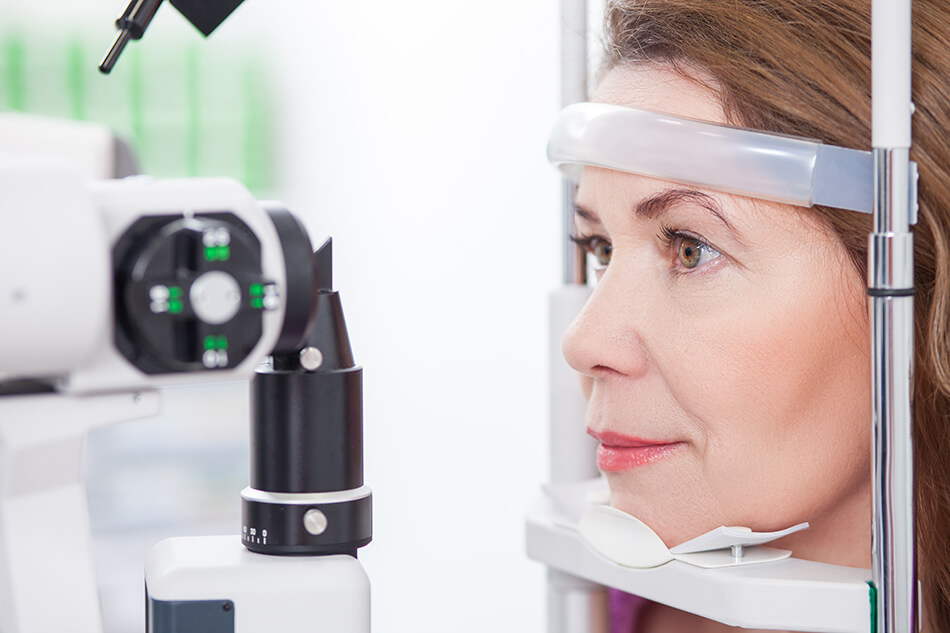Optometrists’ Best Advice For Better Vision Care
No one wants to contemplate how they would cope if they could no longer see. A recent report from the Canadian Association of Optometrists (CAO) declared that vision loss is the most feared disability for Canadians. Fortunately, most causes of vision loss are preventable if treated early. Learn more about the causes of vision loss and how proper vision care can protect you.

Common Causes of Vision Loss
Blindness is one of the most serious health issues facing the world today. In the developing world, rates of childhood blindness are catastrophic. The good news is that 80 percent of all vision related cases can be successfully treated. Bacterial infections like trachoma, and parasitic infections like onchocerciasis, are major causes of blindness in Central Africa and other developing regions. Both infections are treatable with medication.
In Canada, there are four main causes of blindness: age-related Macular Degeneration (AMD), cataracts, glaucoma, and diabetic retinopathy.
Age-related Macular Degeneration (AMD) is the most common cause of blindness in Canada. Age related macular degeneration usually causes vision impairment in older adults over the age of sixty. The macula is located at the back of the eye, at the center of the retina. The retina is a light-sensitive layer of tissue that converts light images into electrical information and sends it to the brain. The macula takes care of central vision, and when it begins to fail people struggle to see what’s right in front of them. People with advanced AMD usually can't read, drive a car, or recognize faces or colours. Often the first sign of macular degeneration is a decrease in vision quality. Sometimes AMD progresses at a slow pace, but it can also progress rapidly and cause vision loss in one or both eyes.
Glaucoma is another eye disease that is more prevalent in old age and is the leading cause of blindness globally. Characterized by damage to the eye’s optic nerve, glaucoma is the result of fluid build-up in the front section of the eye. The extra fluid creates pressure that can tear the optic nerve and cause vision loss or blindness. Some people's optic nerve is extra-sensitive which leaves them vulnerable to developing glaucoma. Eye doctors can diagnose this sensitivity during a comprehensive eye exam.
Cataracts cause blindness in 18 million people around the world. Cataracts are a clouding of the eye's lens. The cataract filters or blocks the passage of light into the eye. Some cataracts are mild and cause blurred vision, while others are severe and lead to complete loss of vision. Often, cataracts can be corrected with surgery.
Diabetic retinopathy is a complication caused by diabetes. This disease affects up to 80% of people who have been diabetic for 10 years or more. In diabetic retinopathy, high blood sugar levels damage the blood cells in the retina. The blood vessels may become too narrow, stopping oxygenated blood from reaching the retina, or they may swell and leak. Vision loss caused by diabetic retinopathy usually can’t be reversed.
The High Cost of Poor Vision Care
The Canadian Association of Optometrists study found that one of the greatest financial burdens on healthcare is vision loss. In the year 2007, it was estimated that $15.8 billion was spent on vision healthcare in Canada.
The cost of caring for those with vision loss is not only a financial burden, it is a human and resource crisis. The number of Canadians with sight problems is forecast to increase dramatically over the next few decades. By the year 2032, vision loss is expected to cost Canadians $30.3 billion. This is due in part to an increase in the number of people who are diabetic or obese; both factors that contribute to vision loss.
Those who experience vision loss are often at risk of financial and societal disadvantage. Only one third of Canadian adults with vision loss are working. Being out of work means not only financial struggle, but social isolation and less contact with the community. Social isolation can result in depression. Clinical depression is common in older people with vision loss. Even when working, most Canadians with vision loss are in low-wage employment and find it difficult to progress in their chosen careers.

The Top 3 Ways to Maintain Good Eye Health
Up to 75% of vision loss can be averted by taking a few simple steps. So what can you do today to protect your vision?
1.Have Regular Eye Exams
When did you have your last eye exam? If it was more than two years ago, you’re not taking basic steps to protect your vision. Some eye diseases have no symptoms at their outset, and without an eye exam they can go undiagnosed. Early diagnosis can dramatically improve treatment options and outcomes. A comprehensive eye exam may also detect symptoms of other serious diseases like: diabetes, Parkinson’s disease, brain tumours, multiple sclerosis, and cancer.
Preventative measures to protect vision should start as early as possible. Babies should have their first eye exam between six and nine months, then another exam between two and five years. After that, children should have one exam per year throughout their school years. The most common cause of vision loss in children is amblyopia (a condition in which the brain and eyes don’t work together properly). Vision loss caused by amblyopia can be prevented if the affected child is treated early enough.
Be diligent about your eye exam schedule but don’t delay a visit to your eye doctor if you notice any of the following symptoms:
- Blurred vision
- Eye redness
- Eye pain
- White or black spots in front of the eyes
- Flashing lights

2.Use Your Corrective Glasses or Lenses
If your eye doctor prescribes corrective glasses or lenses for you, wear them diligently. Some people find glasses uncomfortable or don’t like how they look in them, so choose not to wear them. This issue is especially prevalent among children and young adults. Luckily there are other options, such as contact lenses.
Contact lenses come in a very wide variety of styles. If you have issues with your lenses, try a different brand or type. From soft daily disposables to 30-day continuous wear lenses, there are more contact lens choices than ever before. Discuss your vision correction needs with your eye doctor and with their expertise and guidance you’ll find what works for you.
3.Take Care of Your Overall Health
The health of your vision is affected by many factors associated with your overall health. One of the simplest but most important ways you can look after your health is to maintain proper weight. Being overweight increases your chance of developing diabetes which can lead to diabetic retinopathy.
Obesity also increases the risk of age-related macular degeneration, stroke and glaucoma. High blood pressure caused by obesity can also seriously affect your vision.
Viral infections can also affect your vision. For example, severe viral infections such as shingles or herpes can cause inflammation in your tear drainage system, which can cause serious damage.
We’re all aware of the serious health implications of smoking, but did you know that smoking can compromise your vision? Studies have shown that smoking can massively increase the risk of developing many of the leading causes of blindness such as: cataracts, glaucoma and diabetic retinopathy. There are plenty of resources available to help you quit smoking!!
The thought of losing your sight is distressing. But it’s comforting to know that proper vision care can prevent up to 75% of vision loss. Take the measures to protect your vision. Start today!
